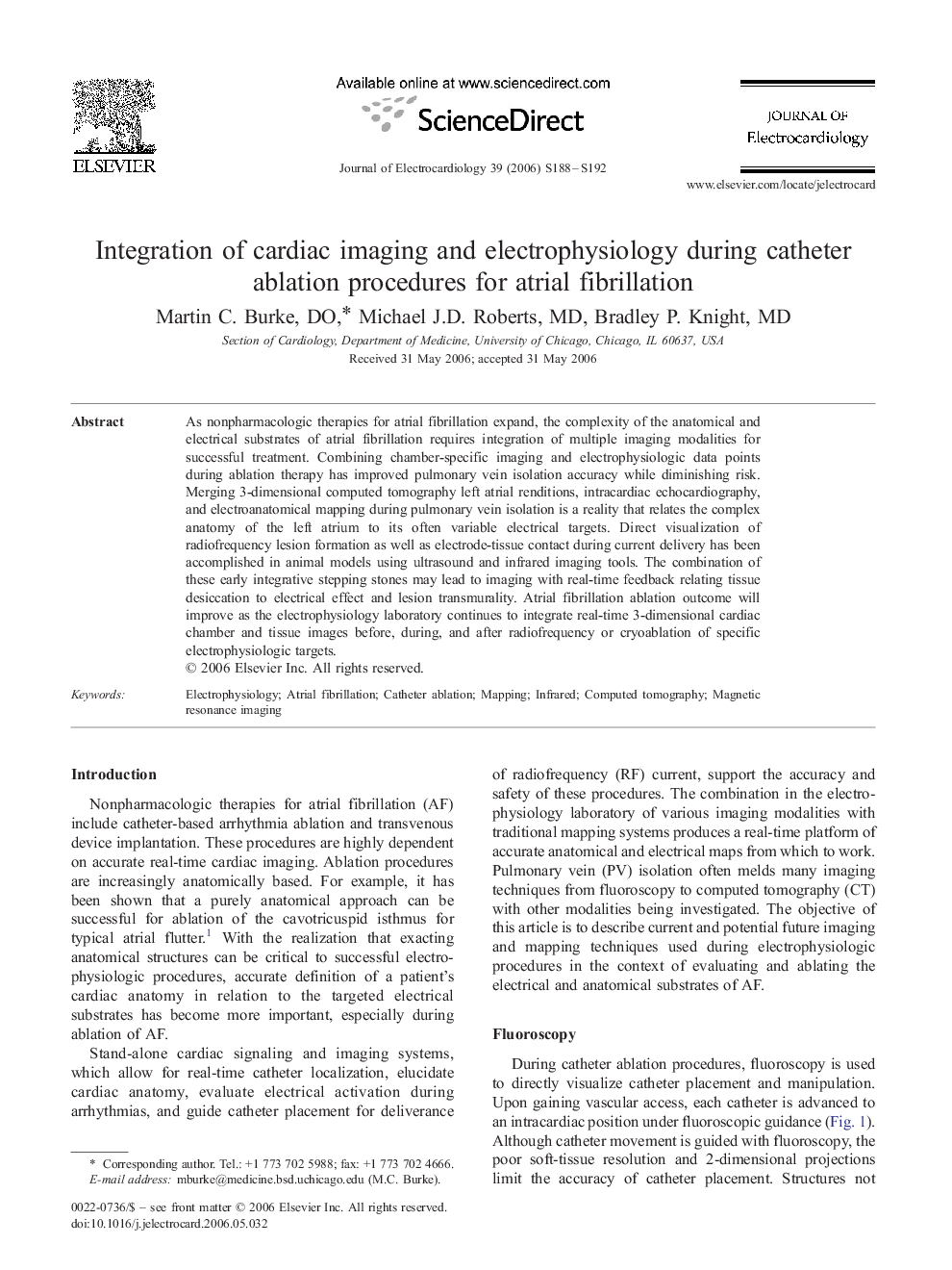| Article ID | Journal | Published Year | Pages | File Type |
|---|---|---|---|---|
| 2968994 | Journal of Electrocardiology | 2006 | 5 Pages |
As nonpharmacologic therapies for atrial fibrillation expand, the complexity of the anatomical and electrical substrates of atrial fibrillation requires integration of multiple imaging modalities for successful treatment. Combining chamber-specific imaging and electrophysiologic data points during ablation therapy has improved pulmonary vein isolation accuracy while diminishing risk. Merging 3-dimensional computed tomography left atrial renditions, intracardiac echocardiography, and electroanatomical mapping during pulmonary vein isolation is a reality that relates the complex anatomy of the left atrium to its often variable electrical targets. Direct visualization of radiofrequency lesion formation as well as electrode-tissue contact during current delivery has been accomplished in animal models using ultrasound and infrared imaging tools. The combination of these early integrative stepping stones may lead to imaging with real-time feedback relating tissue desiccation to electrical effect and lesion transmurality. Atrial fibrillation ablation outcome will improve as the electrophysiology laboratory continues to integrate real-time 3-dimensional cardiac chamber and tissue images before, during, and after radiofrequency or cryoablation of specific electrophysiologic targets.
